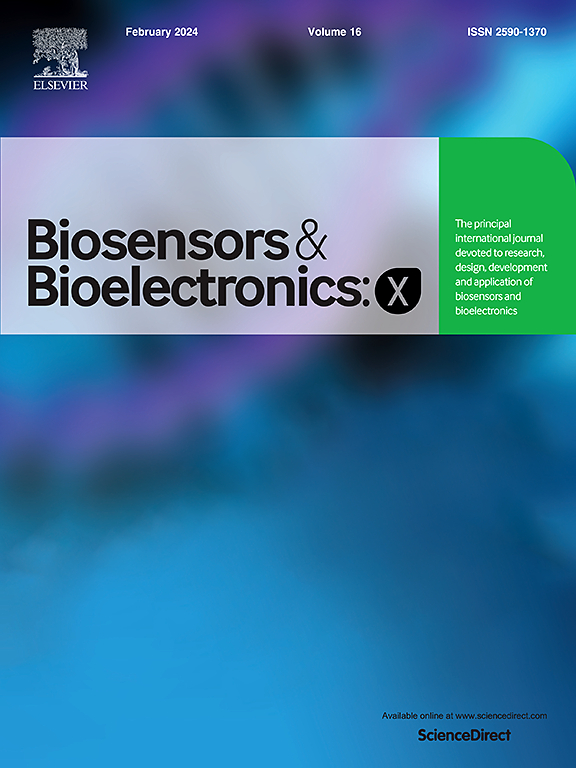A deeper evaluation of cytokeratin fragment 21-1 as a lung cancer tumor marker and comparison of different assays
IF 10.61
Q3 Biochemistry, Genetics and Molecular Biology
引用次数: 0
Abstract
Studies show CYFRA 21-1 fragments of cytokeratin 19 (CK19) to be promising biomarkers for non-small cell lung cancer (NSCLC). Although previous literature identifies specific CYFRA 21-1 antibody binding epitopes, the exact molecular weight of the CK19 fragment being detected by current assays is not well-documented. Serum samples from 58 patients (lung cancer (N = 36), control (N = 22)) were used to measure CYFRA 21-1 across four different quantification assays: enzyme-linked immunosorbent assay (ELISA), chemiluminescent assay (ChLIA), electrochemiluminescence immunoassay (ECLIA), and compensated interferometric reader (CIR). In the cancer group, correlation between ECLIA and ELISA was high (R(Pearson) = 0.948, r(Spearman) = 0.868) while correlation between ECLIA vs ChLIA and ECLIA vs CIR was low (R= 0.005, r = −0.0593), (R = 0.0275, r = 0.167), respectively. In the control group, correlation between ECLIA and ELISA was high (R = 0.948, r = 0.868) while correlation between ECLIA vs ChLIA and ECLIA vs CIR was low (R = 0.005, r = −0.0593), (R = 0.0275, r = 0.167), respectively. Compared to ECLIA, concordance coefficients (pc) were poor (pc < 0.90) across all assays except for cancers group in ELISA (pc = 0.913). ECLIA was the only assay to report control ranges above 1 ng/mL CYFRA 21-1 (ECLIA, 1.14–21.59 ng/mL; ELISA, 0.79–24.26 ng/mL; ChLIA, 0.062–0.691 ng/mL; 0.08–7.68 ng/mL). Differing sizes of the protein being measured by each assay may have a role in the discrepancies observed. Given the different CYFRA 21-1 concentration estimates among assays, further characterization of the fragment and its release during epithelial malignancies, such as NSCLC, is imperative to developing effective biomarker assays.
细胞角蛋白片段21-1作为肺癌肿瘤标志物的深入评价及不同检测方法的比较
研究表明,细胞角蛋白19 (CK19)的CYFRA 21-1片段有望成为非小细胞肺癌(NSCLC)的生物标志物。虽然以前的文献鉴定了特异性CYFRA 21-1抗体结合表位,但目前检测到的CK19片段的确切分子量并没有很好的文献记载。采用58例肺癌患者(N = 36)和对照组(N = 22)的血清样本,通过酶联免疫吸附法(ELISA)、化学发光法(ChLIA)、电化学发光免疫法(ECLIA)和补偿干涉读取器(CIR)四种不同的定量分析方法测定CYFRA 21-1。在癌症组,ECLIA与ELISA的相关性较高(R(Pearson) = 0.948, R(Spearman) = 0.868), ECLIA与ChLIA、ECLIA与CIR的相关性较低(R= 0.005, R= - 0.0593)、(R= 0.0275, R= 0.167)。对照组ECLIA与ELISA的相关性较高(R = 0.948, R = 0.868), ECLIA与ChLIA的相关性较低(R = 0.005, R = - 0.0593), ECLIA与CIR的相关性较低(R = 0.0275, R = 0.167)。与ECLIA相比,一致性系数(pc)较差(pc <;0.90),除了ELISA中癌症组(pc = 0.913)。ECLIA是唯一报告控制范围高于1 ng/mL CYFRA 21-1的检测方法(ECLIA, 1.14-21.59 ng/mL;ELISA, 0.79 ~ 24.26 ng/mL;ChLIA, 0.062 ~ 0.691 ng/mL;0.08 - -7.68 ng / mL)。每次测定所测量的蛋白质的不同大小可能在观察到的差异中起作用。鉴于各种检测方法中CYFRA 21-1的浓度估计不同,进一步表征该片段及其在上皮恶性肿瘤(如非小细胞肺癌)期间的释放,对于开发有效的生物标志物检测方法至关重要。
本文章由计算机程序翻译,如有差异,请以英文原文为准。
求助全文
约1分钟内获得全文
求助全文
来源期刊

Biosensors and Bioelectronics: X
Biochemistry, Genetics and Molecular Biology-Biophysics
CiteScore
4.60
自引率
0.00%
发文量
166
审稿时长
54 days
期刊介绍:
Biosensors and Bioelectronics: X, an open-access companion journal of Biosensors and Bioelectronics, boasts a 2020 Impact Factor of 10.61 (Journal Citation Reports, Clarivate Analytics 2021). Offering authors the opportunity to share their innovative work freely and globally, Biosensors and Bioelectronics: X aims to be a timely and permanent source of information. The journal publishes original research papers, review articles, communications, editorial highlights, perspectives, opinions, and commentaries at the intersection of technological advancements and high-impact applications. Manuscripts submitted to Biosensors and Bioelectronics: X are assessed based on originality and innovation in technology development or applications, aligning with the journal's goal to cater to a broad audience interested in this dynamic field.
 求助内容:
求助内容: 应助结果提醒方式:
应助结果提醒方式:


